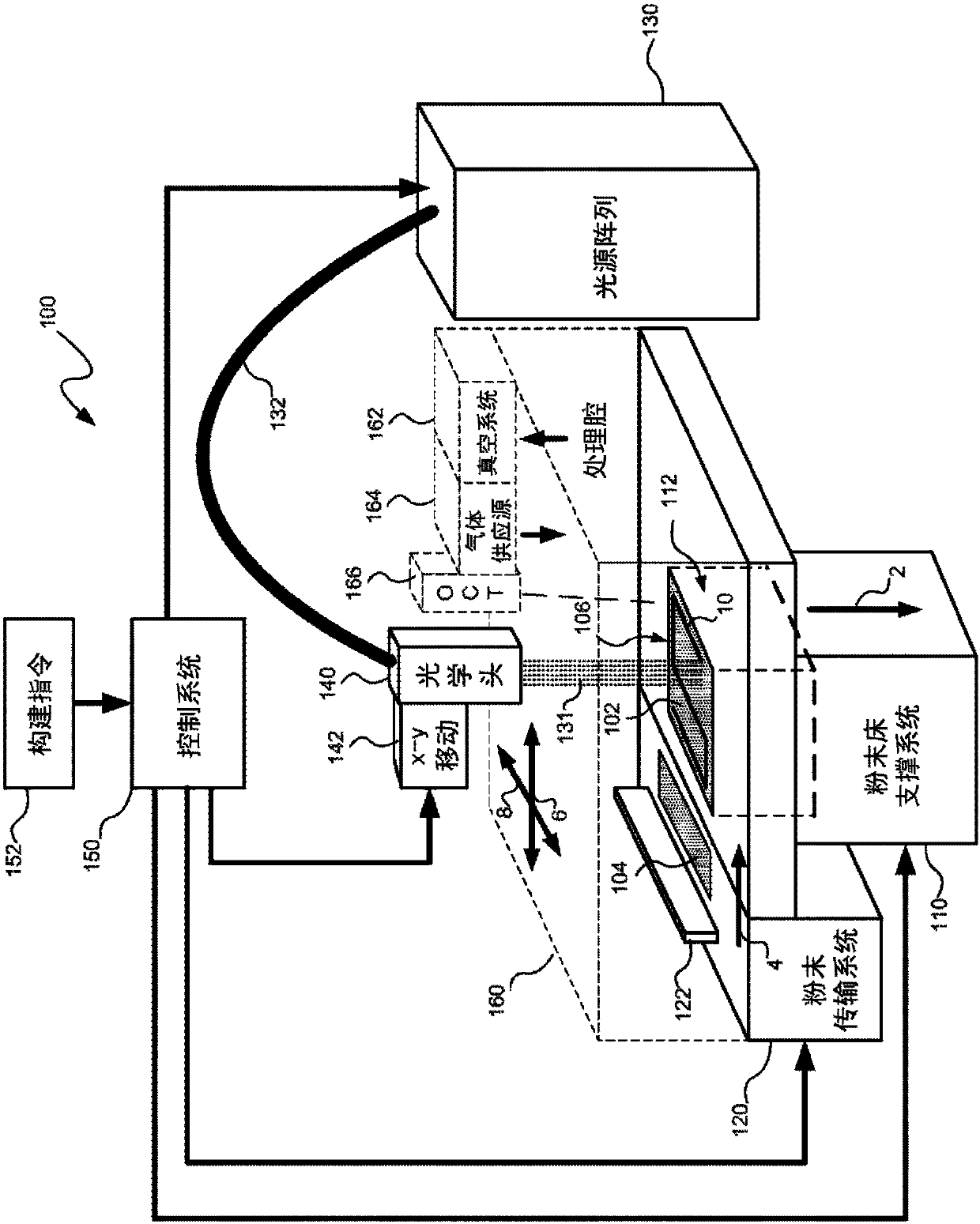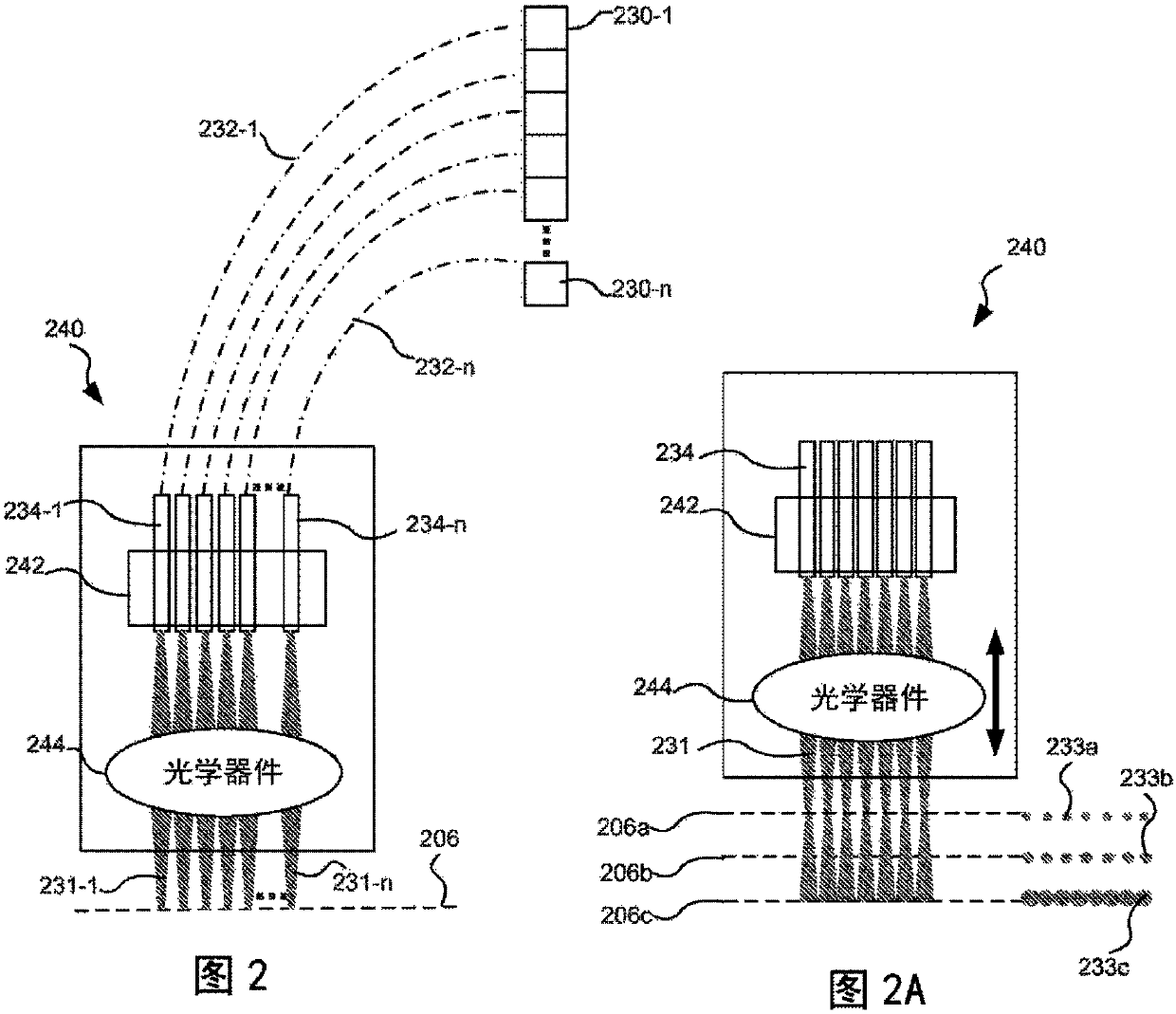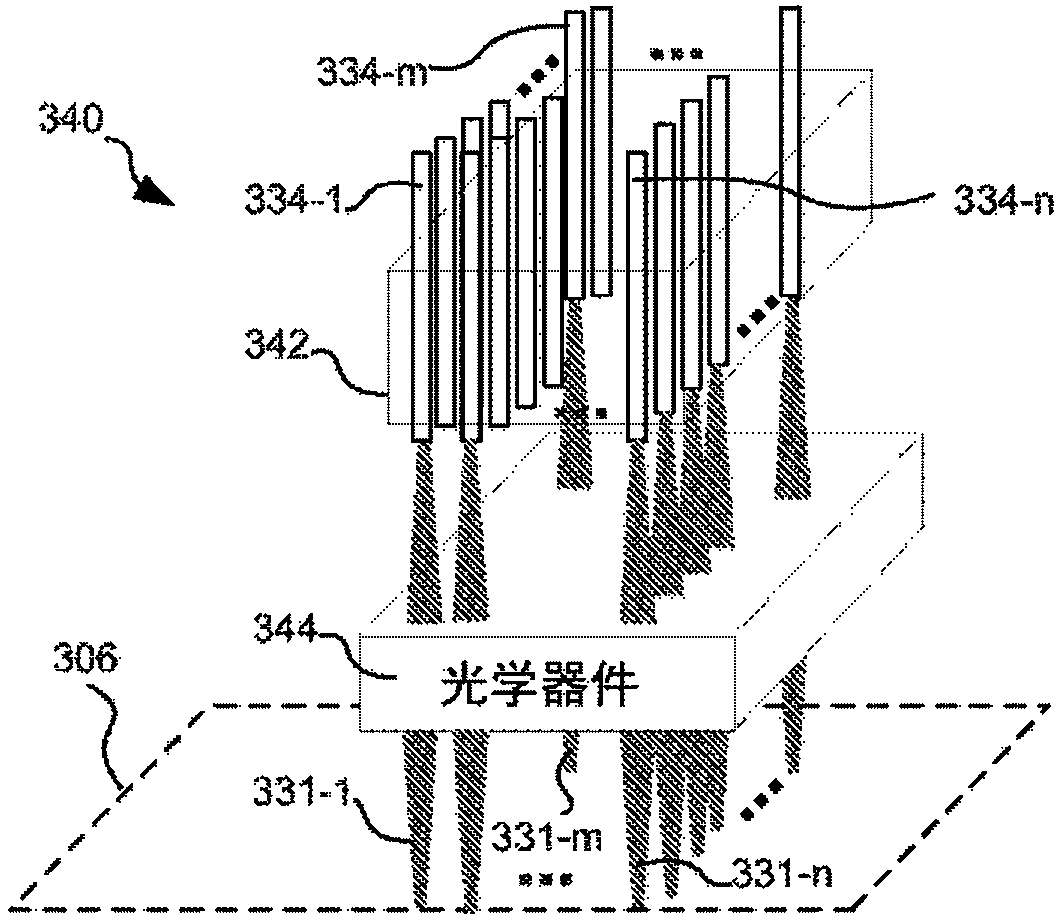Multiple beam additive manufacturing
An additive manufacturing, multi-beam technology used in the field of additive manufacturing
- Summary
- Abstract
- Description
- Claims
- Application Information
AI Technical Summary
Problems solved by technology
Method used
Image
Examples
Embodiment Construction
[0039] Systems and methods for multi-beam additive manufacturing consistent with the present disclosure use multiple beams of light (e.g., lasers) to expose a layer of powder material in selected areas until the powder material melts to form voxels, which form three-dimensional structured build layers. Light can be generated from a selected light source and coupled into an array of optical fibers having outputs arranged in at least one row in the optical head so that multiple beams are sequentially directed by the optical head to the same powder area, thereby providing a multi-beam Sequential exposures (eg, preheating, melting, and controlled cooling) fuse the powder regions. Multiple sequential beams can be moved using various techniques (eg, by moving an optical head) and according to various scanning patterns, such that multiple fused regions form each buildup layer.
[0040] By providing a multi-beam sequential exposure with varying intensities over the area of the powd...
PUM
| Property | Measurement | Unit |
|---|---|---|
| power output | aaaaa | aaaaa |
| diameter | aaaaa | aaaaa |
| wavelength | aaaaa | aaaaa |
Abstract
Description
Claims
Application Information
 Login to View More
Login to View More - R&D
- Intellectual Property
- Life Sciences
- Materials
- Tech Scout
- Unparalleled Data Quality
- Higher Quality Content
- 60% Fewer Hallucinations
Browse by: Latest US Patents, China's latest patents, Technical Efficacy Thesaurus, Application Domain, Technology Topic, Popular Technical Reports.
© 2025 PatSnap. All rights reserved.Legal|Privacy policy|Modern Slavery Act Transparency Statement|Sitemap|About US| Contact US: help@patsnap.com



